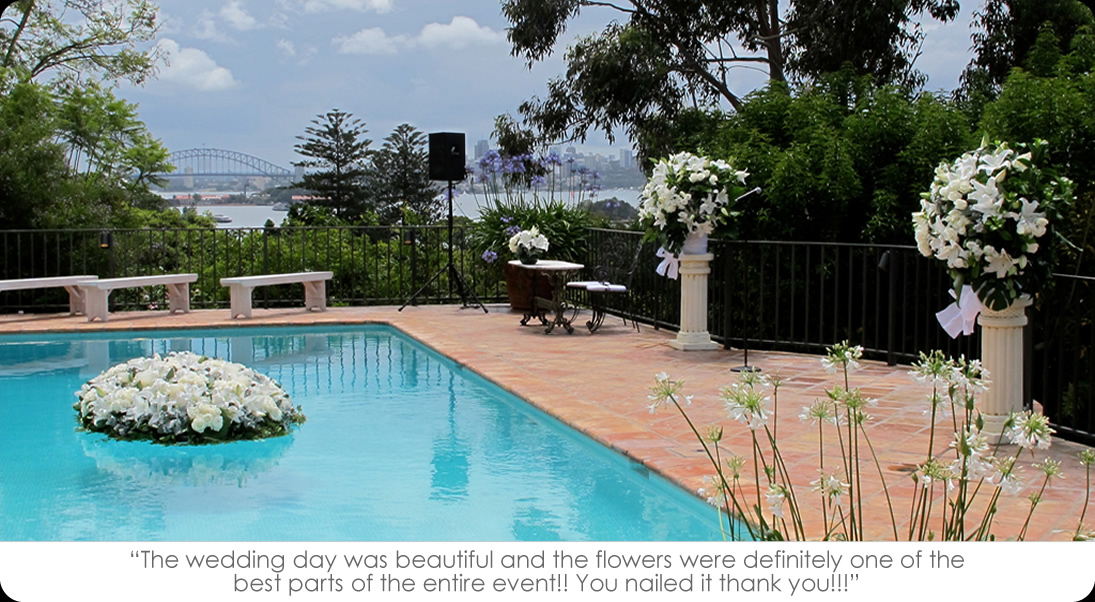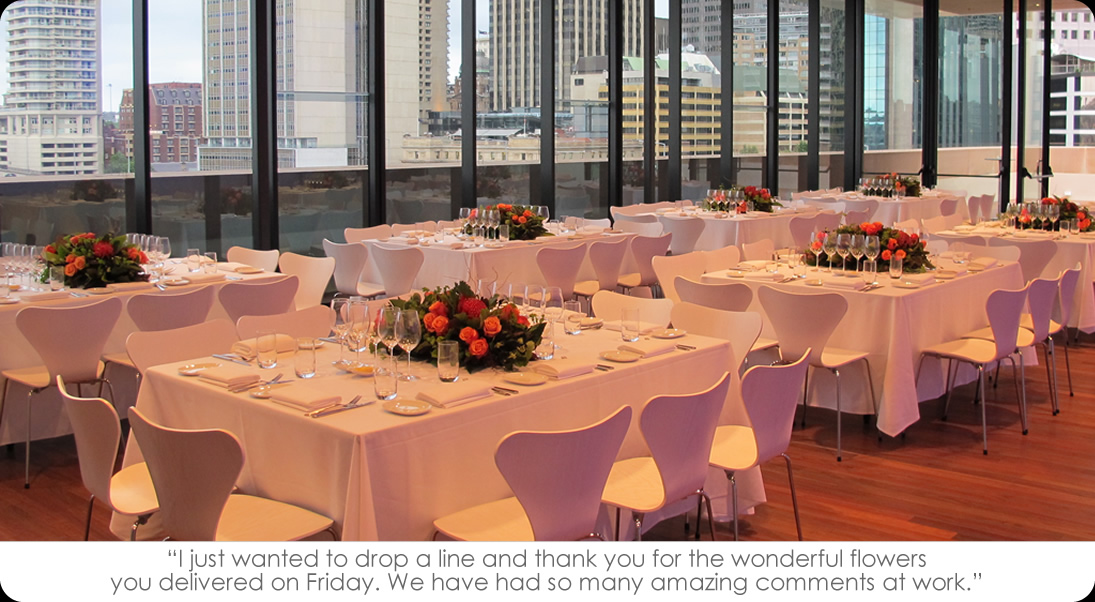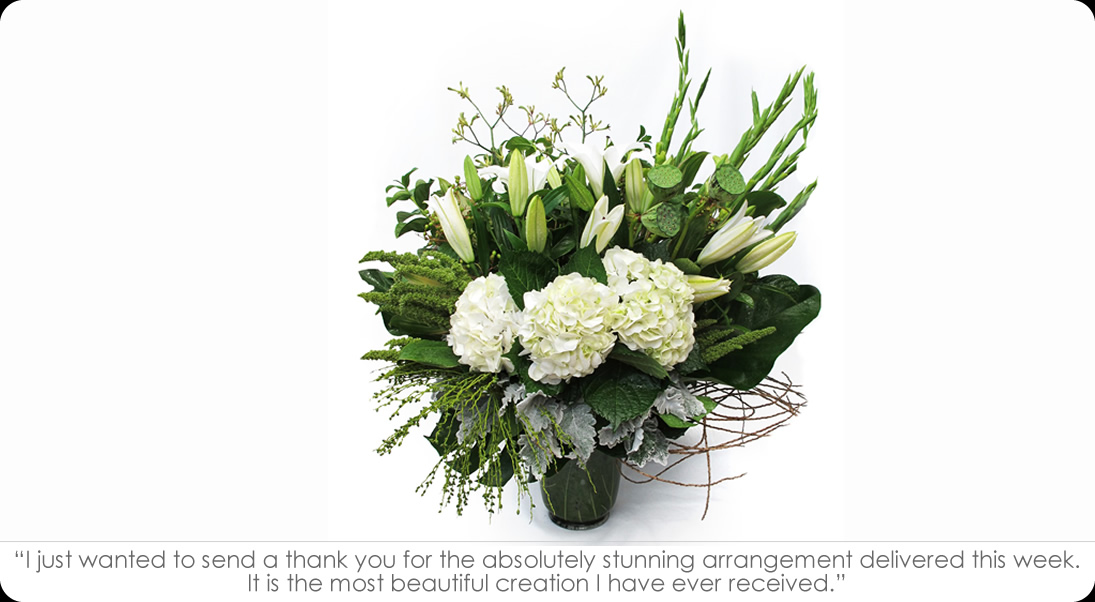This site is being worked on for Bondi florists � what follows is just page fill at present
Bondi Floristry is the general term used to describe the professional floral trade.
It encompasses flower care and handling, floral design or flower arranging, merchandising, and display and flower delivery.
Bondi florist sells bulk flowers and related supplies to the public and professionals in the trade.
Bondi florists offer fresh flowers and related products and services to consumers.
Florist is a term can refer to the cultivation of flowers as well as their arrangement, and to the business of selling them.
Much of the raw material supplied for the florist trade comes from the cut flower industry.
Bondi Florist Floral Design or floral arts is the art of creating flower arrangements in vases, bowls, baskets or other containers, or making bouquets and compositions from cut flowers, foliages, herbs, ornamental grasses and other plant materials.
Often the terms "floral design" and "florist" are considered synonymous.
Bondi Florist Florists are people who work with flowers and plants, generally at the retail level.
The term is not to be confused with floristics (the study of distribution and relationships of plant species over geographic areas.). Floristry is also not to be confused with horticulture which more broadly relates to the cultivation of flowers and plants.
Bondi The Florist craft and business
The craft of floristry, or being a florist, involves various skills and creativity. An Bondi florist should be able to select flowers and other floral supplies and materials that will look good together (based on principles and elements of floral design or market demands), know how to handle and arrange flowers and plants so they will remain fresh as long as possible, and would be desirable for purchase, which also involves knowledge of customers' requirements and expectations.
�Ability to create a variety of floral designs such as wreaths, bouquets, corsages, boutonni�res/'buttonholes', permanent arrangements and other more complicated arrangements is also important.
The flowers sold by Bondi florist typically represent the varieties abundantly available in the season but also include blossoms flown in from around the world. Basic varieties in temperate latitudes include roses, tulips, irises, orchids and lilies. Fashion sometimes plays a role in florist; what is considered the flower that everyone needs to have today can change very quickly.
Bondi florists also stock gift baskets, fruits, and chocolates as well as flowers, whereas some shops will purchase these things only when needed for an order. Floral business is seasonal and is heavily influenced by the following holidays and events: Christmas, Valentine's Day, Administrative Professionals' Day, Mothers' Day, All Souls Day, Advent, Easter, weddings and funerals.
These occasions make up the largest part of the business, with the sale of house plants and home decor being a smaller, but more constant, part. Flowers for personal enjoyment as well as those selected to celebrate birthdays, anniversaries, thank-you's and get well wishes are also a significant portion of a florist's business.
Education, both formal and informal, is another significant segment of the Bondi florist business. Established florist designers and artists impart their craft to students interested in floral design as hobby or career. Courses are generally available in through community colleges, via private post-secondary vocational schools and through professional florist trade associations.
The florist business has a significant market in the corporate and social event world as flowers play a large part in the decor of special events and meetings. Centerpieces, entryways, reception tables, bridal bouquets, wedding chuppahs and stage sets and only a few examples of how flowers are used in the business and social event settings.
Bondi Styles of floristry
Many nations have their own style of floral arranging.
Bondi Ikebana
Ikebana is a style of floral design that originated in Japan. Best known for its simplicity of line and form, Ikebana is a design style primarily practiced for personal enjoyment.
Bondi English Garden
English Garden style is traditionally an English form of floral design. Stems are placed in a radial fashion and feature abundant use of seasonal flowers and foliages. These designs are often done as low, tufted mounds, or taller vase arrangements that are all-sided (360�), and incorporate garden flowers like roses, delphinium and peonies. Many florists that follow this design style do not use Baby's Breath, Carnations and Leatherleaf.[
Bondi High Style
High Style is a catch-all term to describe contemporary, linear designs that highlights unique forms of both individual floral materials and of the designs themselves. Arrangements generally feature negative space and incorporate asymmetric placement of materials. The style stands in direct contrast to traditional radial arrangements such as English Garden.
High Style designs often incorporate unique, exotic or tropical flowers such as such as Bird of Paradise, Anthurium and Protea but may also employ more common blossoms.
Bondi Fresh flower sources
There are usually three major sources of fresh flowers for retail florists: local growers, local wholesalers and flower auctions. The majority of these are supplied by specialist horticultural and cut flower suppliers.
Bondi Shop layout
Bondi florists have a large array of flowers, sometimes displayed on the street, or will have a large plate glass window to display the flowers.
To keep them fresh, the flowers will be inside of a cooler and kept in water, generally in glass or plastic vases or other containers. Most shops have a cooler near the front of the store with large glass doors so that customers can easily view the contents. Some shops also have another cooler out of the customers' view where they keep extra stock and arrangements for customers' orders. Most stores have a back section in which the designers can work on orders with more privacy.
Bondi Significance of particular flowers
�
A name tribute ("MUM") at a funeral� made with Chrysanthemums
Typically, a florist will organize flowers by season and holiday. Flowers have various different meanings in different cultures. The holidays and events for which flowers are used vary. Poppies are used to remember fallen soldiers only in Australia, Great Britain and the Commonwealth countries. The cultural meaning of colors also strongly affects the choice and use of flowers. People often prefer flowers that are associated with their ethnic group or country, and various colors may have special meanings of luck or death or love or other basic human traits. To some, a flower such as a red rose might mean love, but to others it might be considered indecent or simply puzzling. The vastly divergent views on the color white can also lead to major flower issues. While white represents death in many Asian cultures, it is simultaneously a symbol of purity and innocence in many European and American cultures. Such differences can lead to difficult issues when a bouquet of white lilies, for example, is delivered.
Bondi flowers
� Bondi florists offer a limited selection, usually in the form of mixed bouquets and roses by the dozen. Flowers purchased at these outlets are generally less expensive than the flowers purchased at a florist shop. however these flowers are not arranged by anyone with professional training or the years of on-the-job training that is standard for the employees of a professional flower shop.
Bondi Internet sales
The World Wide Web has had a significant impact on traditional florists, with the Australian� market experiencing a more than 20% decline in traditional, independently owned flower shops since 1998. Purchases from shops are slowly being overtaken by online flower delivery ordering and floral wire services. However, some independent florists have taken to having their own online store, where customers can order online as well as on the telephone.

![]()



